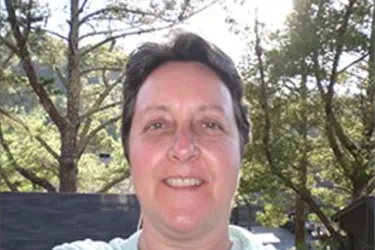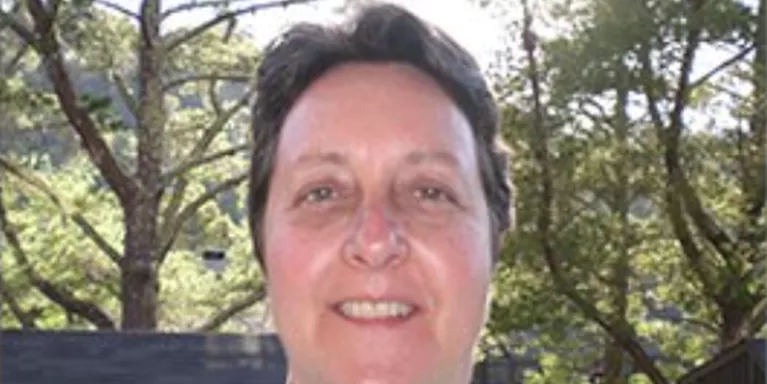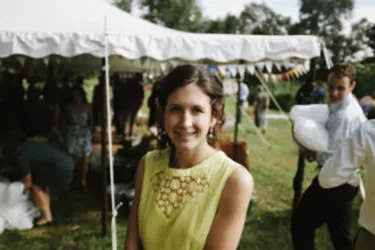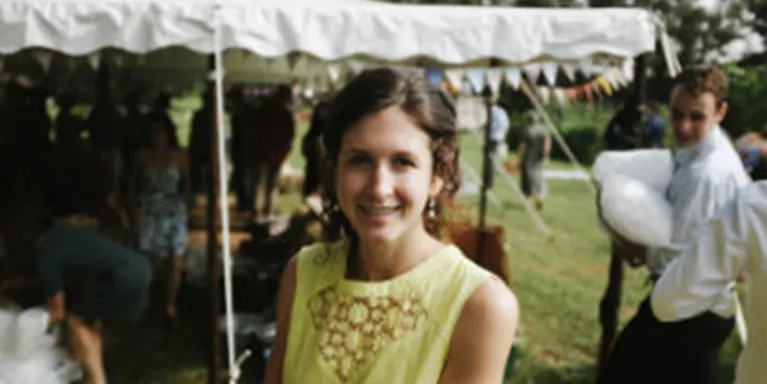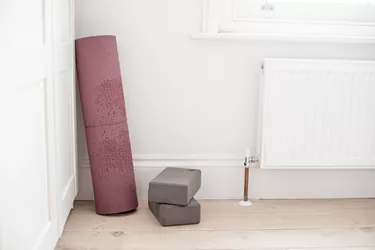A diary of mindfulness, week six - thoughts are not facts
In the sixth in her series on mindfulness and depression, Clare blogs about the freedom that can come from recognising that our thoughts aren't facts.
I've been writing a diary of my experiences of an eight week Mindfulness Based Cognitive Therapy (MBCT) course. You can see a list of the themes for the weeks, and a link to weeks one to five on my blog.
< Read about week 5 or Read about week 7 >
Week six - thoughts are not facts (even the ones that say they are!)
"It is remarkable how liberating it feels to be able to see that your thoughts are just thoughts and that they are not ‘you’ or ‘reality.’" - Jon Kabat-Zin
This week started with the leader of the course reading us four sentences, in order. We sat with our eyes closed and listened to them. It is hard to replicate the activity here but hopefully I can give you some sense of it. Try to read the sentences one at a time.
- John was on his way to school.
- He was worried about the maths lesson.
- He was not sure he could control the class again today.
- It was not part of a caretaker’s duty.
After each sentence, I had a mental picture of the situation - and I had to keep updating this as each new sentence was read out. In my head John was first a child, then a teacher before finally turning out to be a caretaker.
This activity was to show us how we are always automatically adding to what we see hear, to try to make meaning out of them. We don’t usually notice it, until someone takes us through something like this activity, which more actively plays tricks on us.
These thoughts become something like a running commentary in our mind, going on just below the surface and influencing our emotions. But we need to try and identify this commentary, and these interpretations as thoughts, not facts.
After everything we have done in the course so far, this idea doesn't feel like something new. Many times during the meditation and work we have been doing, we have been encouraged to see thoughts as thoughts, popping in and out of the sky of our mind.
We have also identified that often the thoughts we have can make it more difficult to practice mindfulness and meditation - ones such as: "This isn't going to help...I'm useless at this...this doesn't make any sense." We’ve been encouraged to move from these thoughts back to our awareness of the breath.

How do our thoughts usually behave?
The leader of the session described our thoughts as behaving like a radio, or a cinema screen with words scrolling across, an ongoing stream just below our consciousness. They often pretend that they are rational questions: "What's wrong with me?...Who would want to know me?... How can I stop feeling this way?"
This makes us think (mistakenly) that if we think hard enough, there might be an answer. We often take them as an accurate reflection of reality and get sucked into believing they are facts.
We were encouraged, during a breathing space meditation, to try and 'watch' this screen and wait for the mental events that are thoughts to arrive. If the metaphor of a cinema screen doesn't help, try some of the others I’ve mentioned - for example the mind as a sky with thoughts as clouds, some light and fluffy, some big and thunderous, moving across them.
Becoming more aware of our thoughts as thoughts and not as facts helps us to deal with them in a more skilful way immediately. This stops us letting ourselves get dragged into the vicious cycle of rumination, or a train of negative thoughts that can change our mental space without us realising they are doing so.
What can we do to help see our thoughts as thoughts, not as facts?
When we discussed this in the session, the leader suggested that often the three minute breathing space meditation is a good first step when we become aware of this stream of thoughts. This way we can try and watch our thoughts come in and leave without having to follow them.
Ask questions about your thoughts: "Was this an automatic thought?...Does it fit with the facts of the situation?...Would I have thought differently in another mood?"
Although not something that can be done within the breathing space meditation, writing thoughts on paper can help us get some perspective on them - seeing them as something separate to us and less associated with emotions. I’ve explored how writing can help with thoughts and emotions in more detail in my blog.
Once we have identified something as a negative thought, the idea is to approach it with the gentleness and curiosity explored in the previous blog. Still within the breathing space, try to expand your awareness to ask some questions about the thought. Some examples of the sorts of questions you might ask are;
- Perhaps I am jumping to conclusions?
- Perhaps I am thinking in black and white terms?
- Perhaps I am judging myself?
- Perhaps I am expecting perfection or overestimating disaster?
We’ve talked before about naming thoughts - you can also name a series of thoughts. Using the cinema metaphor, you can think: "Ah, here's the 'I'm too fat' tape which seems to be running again."
This helps us to stop seeing the stream of thoughts as a practical thing to take action against - but as a tape, running in the head that will be an inconvenience until the 'batteries run down' or it stops of it's own accord. This isn’t to say you won’t still feel some of the force of the thoughts - but by standing on the bank, rather than in the middle of them, you won’t get caught up in thinking they are reality.
Something else that can be useful to do with difficult thoughts is to use the breathing space to find the impact on the body and breathe into it. Like before, gently repeat it's ok to feel like this - it's ok to feel sad, irritable, frustrated, like a failure. This acceptance itself changes our relationship to them and stops us getting caught up in them. They may not disappear but we are no longer being controlled by them, our relationship with them is changed and we are not led by the rumination they cause.
As Jon Kabat-Zin says in the quote above, recognising our thoughts as only thoughts can be really liberating. In the session we were told the story of a man who had had a heart attack in the past and wanted to prevent another one.
One night, he found himself washing his car at 10pm with the floodlights on his driveway. He suddenly realised that he didn’t have to be doing it. He had a thought that he had to get his whole to do list done today and he was unable to question the truth of this. Once he better managed to recognise the thoughts about what he had to do were just thoughts, he was able to take a step back from the distorted and stressful reality that they created.

How does what we have been so far doing help?
Mindful meditation is not using the thinking mind, not using rational thought or reflection. By becoming aware, again and again of thoughts and images passing through the mind and returning our breath to the moment we can get some distance and perspective.
Through the work we have been doing, we have become more used to refocusing on the breath when things get negative - not as a tool to 'pull ourselves together' as this can all too easily lead to self criticism but as a way of changing our relationship with our thoughts
I really recognised how this was starting to help me one night the week after this session. I was overtired and stressed from work, and we had friends visiting. One of the friends was late so we put her plate of salmon and salad aside for her to eat when she arrived.
Later that night, when I was just dropping off, I heard the sound of someone flushing the toilet twice in quite quick succession. I immediately started thinking: "Someone is ill...maybe it's our friend...it was probably that salmon...I was stupid to leave it too close to the fire...she might have food poisoning."
From these thought associations, I started to get emotions of dread and worry and found myself tossing and turning and trying to listen carefully for other noises. I took a breathing space and was able to identify that actually, the only thing that was a fact was that the toilet had flushed twice. All the rest of it was my thoughts - jumping to conclusions, overestimating disaster and condemning myself.
This enabled me to decide that, purely on the basis of the toilet flushing twice, I probably didn’t need to get up and see if my friend was dying of food poisoning. I was able to get to sleep and in the morning, my thoughts of the night were of course proved to be just that, thoughts. My friend had enjoyed the salmon, slept well and was up working before I even came downstairs.
From thoughts come actions, and from actions come all kinds of consequences. Mindfully understanding that thoughts are not facts (even the ones that say they are) helps us to see them clearly so we can choose which ones to act on.
The next session is very strongly about action - and is called - How can I best take care of myself.
Clare writes her own blog on mental health, relationships and online youth support. You can follow her on twitter@fostress.

Information and support
When you’re living with a mental health problem, or supporting someone who is, having access to the right information - about a condition, treatment options, or practical issues - is vital. Visit our information pages to find out more.
Share your story with others
Blogs and stories can show that people with mental health problems are cared about, understood and listened to. We can use it to challenge the status quo and change attitudes.










